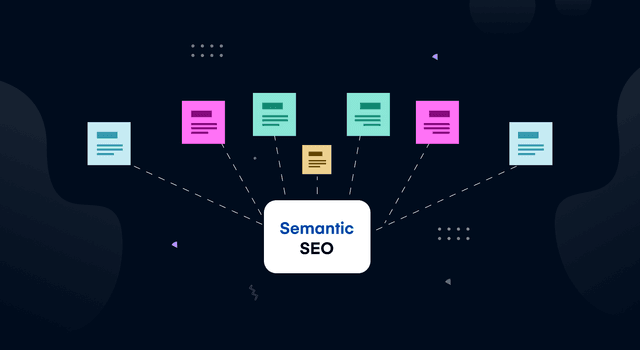Mastering the Art of Semantic SEO: A Practical Guide

As the digital landscape evolves, the need to Implement Semantic SEO becomes imperative for anyone looking to stand out in the vast ocean of online content. Semantic SEO isn’t just about keywords; it’s about understanding the intent behind those words and providing rich, meaningful content that resonates with both users and search engines. If you’ve been scratching your head, wondering how to leapfrog over competitors in search rankings, this guide is your golden ticket. We’ll show you how to weave semantic strategies into your SEO fabric to enhance your content’s relevance and discoverability. Get ready to dive deep into the world of Semantic SEO and transform your online presence!
Table of Contents
Introduction to Semantic SEO
Let’s kick things off by peeling back the layers of Semantic SEO. In a nutshell, it’s the process of building more meaning into the words we use in content to ensure that search engines and users alike can grasp the essence of what’s being communicated. It’s not just about ranking for a keyword but about context, synonyms, and related phrases that paint a clearer picture.Why Implement Semantic SEO?
- It aligns with search engines’ evolving algorithms.
- Enhances user experience by delivering more accurate results.
- Increases organic traffic through improved content visibility.
Key Components of Semantic SEO
- Understanding user intent
- Creating content that goes beyond keywords
- Utilizing structured data
Understanding Semantic Search
At the heart of Implement Semantic SEO lies the concept of semantic search. This tech-savvy beast is all about context. It’s like the search engine’s way of reading between the lines to figure out what users are really after.What is Semantic Search?
Semantic search is a sophisticated approach that considers various factors such as user context, search history, and global search data to deliver search results that are as sharp as a tack.How Does Semantic Search Work?
- It analyzes the intent behind search queries.
- It looks at the relationships between words and concepts.
- It uses natural language processing to understand queries better.
Keyword Research for Semantic SEO
Gone are the days when keyword stuffing was the go-to SEO strategy. Nowadays, it’s all about finding those juicy keywords that are relevant to your content and audience.Finding the Right Keywords
When you’re on the hunt for keywords, think about the topics your audience is interested in and the questions they’re asking. Use tools like Google’s Keyword Planner or even just a good ol’ brainstorming session to get the ball rolling.Going Beyond Exact Matches
- Look for synonyms and variations of your primary keywords.
- Consider long-tail keywords that capture user intent.
- Don’t forget about related topics and questions.
Optimizing Content for Semantic Relevance
Alright, let’s get down to the nitty-gritty of creating content that’s as tasty as grandma’s apple pie to both search engines and readers.Writing with Intent
When you sit down to write, think about what your audience is trying to achieve. Are they looking to learn something new, solve a problem, or find a specific product? Your content should be a beacon of light guiding them to their destination.Structuring Your Content
- Use headings and subheadings to break up text and make it skimmable.
- Incorporate bullet points and numbered lists to highlight key points.
- Throw in some relevant quotes or statistics to add credibility.
Structured Data and Schema Markup
Now, let’s chat about the secret sauce of Semantic SEO: structured data and schema markup. This is like giving search engines a pair of glasses to see your content more clearly.What is Structured Data?
Structured data is a standardized format for providing information about a page and classifying the page content. It’s like a cheat sheet that tells search engines exactly what’s on your page.Implementing Schema Markup
- Use schema.org vocabulary to add markup to your HTML.
- Highlight elements like articles, products, and events.
- Test your markup with Google’s Structured Data Testing Tool.
Building Semantic Authority
Now, let’s talk turkey about building authority. In the world of Semantic SEO, authority is all about proving you’re the bee’s knees in your niche.Creating Authoritative Content
Authoritative content is like the cream of the crop. It’s well-researched, well-written, and provides a ton of value to readers. It’s the kind of content that makes people sit up and take notice.Establishing a Web of Trust
- Get your content out there by sharing it on social media and other platforms.
- Network with other authorities in your field to build credibility.
- Encourage backlinks from reputable sites to boost your SEO juice.
Conclusion: The Future of SEO
As we wrap things up, it’s clear that the future of SEO is all about understanding and catering to user intent. To Implement Semantic SEO is to embrace a holistic approach that goes beyond keywords and dives deep into the meaning behind them. Remember, it’s not just about getting to the top of the search results; it’s about staying there. By focusing on semantic strategies and creating content that truly resonates, you’ll be able to build a sustainable online presence that stands the test of time. So, go forth and conquer the digital world with your newfound knowledge of Semantic SEO. The sky’s the limit!Ai content
This article was generated by Skelet AI
2000+ words in under 10 seconds, costing on average $0.05 per article.*
Ai content
AI-Powered Visuals
Skelet AI HD images effortlessly generated with easy prompts